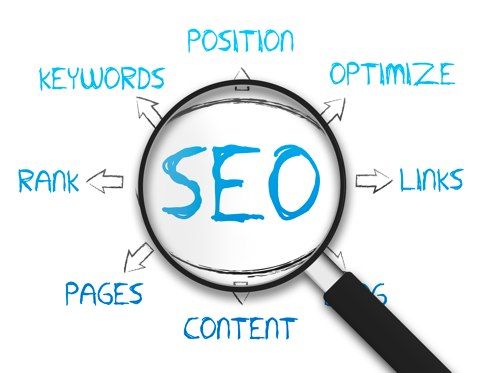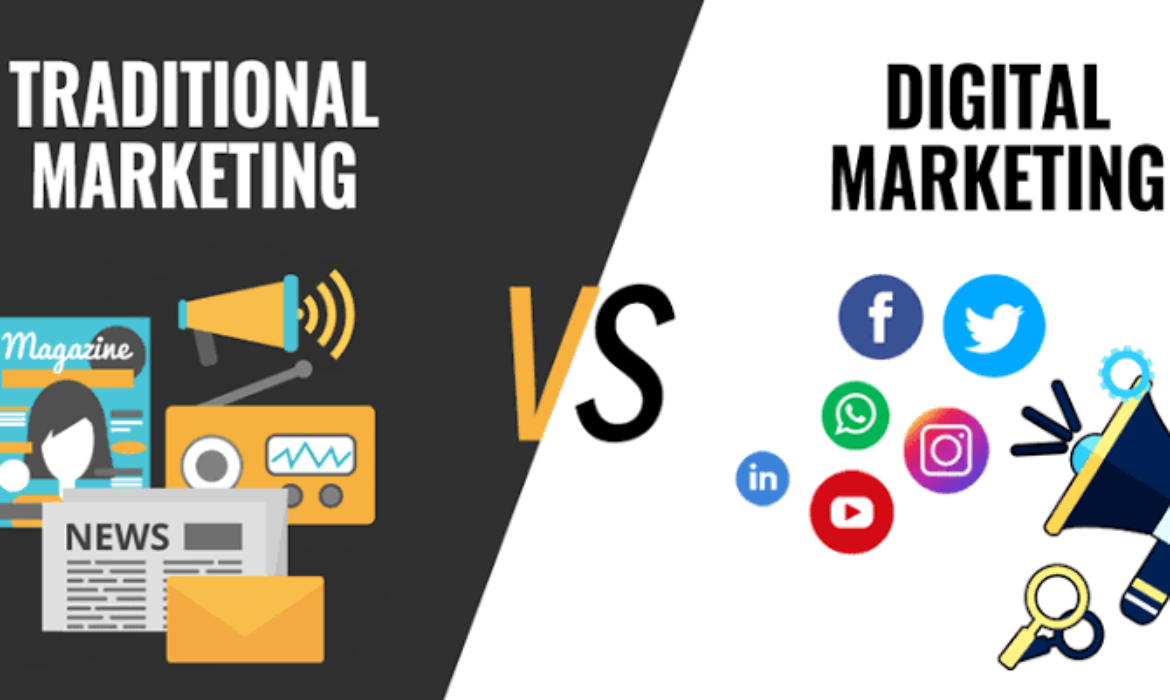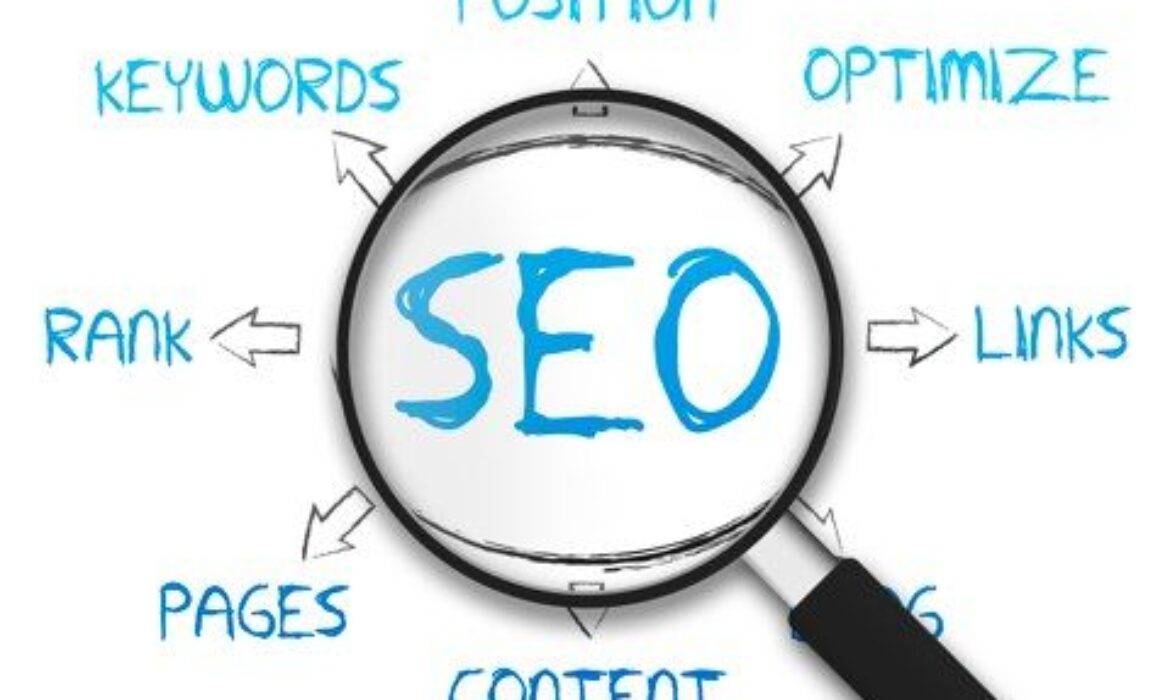081-4797-7173
Best On-line casino Inside Philippines Using Gcash
Blogs
If it were the stock market, think of casino Diceland casino the guidance such as bluish-chip carries. I merely recommend by far the most top and you may reliable gambling establishment brands inside the a having shown to be most safe for people and constantly commission payouts quickly and you can reliably. (more…)
Best No deposit Bonuses and you can Requirements 2024 You Web based casinos
Posts
You need to do an alternative Inspire Vegas account so you can claim it limited-day give. You must unlock an alternative McLuck membership so you can claim that it strategy. (more…)
Eating Disorders Causes and Prevention for Mental Health
Eating disorders are complicated mental health illnesses defined by disorganized eating habits and an obsession with body weight and shape. They can be identified by a chronic disturbance of eating or eating-related behavior that changes food consumption or intake and severely compromises physical health or psychological well-being.
Types of Eating Disorders

1. Anorexia Nervosa: This condition is characterized by a strong fear of gaining weight, which leads to restricted eating habits and a distorted body image. This can lead to severe thinness, lack of nutrition, and a variety of health problems.
2. Bulimia Nervosa: Bulimia is characterized by periods of overeating that are followed by compensatory behaviors such as vomiting, excessive exercise, or laxative usage. This pattern of overeating and purging can be harmful to one’s physical and mental health.
3. Binge Eating Disorder (BED): This is characterized by consuming huge amounts of food in a short period of time, typically quickly and to the point of pain. Individuals with BED, unlike those with bulimia, do not participate in frequent compensatory behaviors, which can lead to obesity and other health problems.
4. Avoidant/Restrictive Food Intake Disorder (ARFID): This is a type of eating disorder in which the individual avoids particular foods or food groups and is hesitant to try new foods. This excludes anxiety about bodily shape or size. This condition can result in poor nutrition and reduced social functioning.
5. Pica: This is the repeated consumption of non-nutritive things such as dirt or paper.
6. Rumination Disorder: This is characterized by repeated vomiting of food, which may be re-chewed, re-swallowed, or spit out.
Causes of Eating Disorders

1. Psychological Factors
Eating disorders can be caused by issues such as low self-esteem, dissatisfaction with one’s body, perfectionism, and difficulties coping with emotions or stress. Trauma, abuse, and other life stresses might also contribute to their start.
2. Biological Factors
Genetics, neurotransmitter imbalances, and hormone imbalances can all play a part in the development of eating disorders. Individuals having a family history of such diseases may be predisposed to them.
3. Sociocultural influences
Pressures from the media or social circles to achieve a certain body shape, weight, or beauty standards might contribute to the development of eating disorders.
Importance of Early intervention
1. Long-term Consequences Prevention: Early detection and management can help avoid the development of eating disorders. It can also help to avoid physical and psychological problems like starvation, organ damage, electrolyte imbalances, and co-occurring mental health conditions.
2. Psychological well-being: Addressing eating disorders early helps reduce the psychological consequences, such as depression, anxiety, and social isolation.
3. Improving therapy Efficacy: Intervening early raises the chances of successful therapy and long-term healing. It enables the use of complete treatment methods such as psychotherapy, nutritional counseling, and medical support.
4. Addressing Underlying Issues: Early intervention allows for the identification and treatment of the root causes that contribute to the development of eating disorders, such as emotional distress, trauma, or dysfunctional coping strategies.
5. Education and Awareness: Early intervention allows for increased education and awareness, improving understanding and empathy for persons suffering from eating disorders. Education equips communities to notice warning signs, support afflicted individuals, and foster a culture of body positivity and mental well-being.
Understanding the numerous types of eating disorders, their complex causes, and the crucial significance of early intervention is critical for establishing a society that fosters mental health, empathy, and support for people impacted by these difficult situations.
How to Write the Perfect Business Proposal in Nigeria
Many companies and organizations write Business Proposal. So, it’s a necessity to write a well-structured business proposal that is recommendable. Introducing steps and tips, for writing a perfect business proposal in Nigeria. This is what this blog aims to achieve.
Business Proposals and Business Plans are of great value in businesses. And they both have different purposes and functions which we will address.
What is a Business Proposal?
A business proposal: is a document a company creates to offer a product or service to a potential client. It’s a document that explains what you can do for the client, why you are the best choice, and how much it will cost.
The goal is to convince the client that your solution meets their needs and is worth the investment.
What is a Business Plan?
In simple terms, a business plan is like a roadmap for a business. It’s a written document that outlines what a business is, what it aims to achieve, and how it plans to do it.
A detailed plan that helps the business owner and potential investors or partners, how to operate the business.
We have individual knowledge of a business proposal and a business plan. Now, Let’s dive into the types of business proposals.
Types of Business of Proposal
Business proposals are either solicited or unsolicited. A solicited proposal is a requested proposal by the company. The name is RFP (Request For Proposal), which is either a Formal or Informal Business Proposal.
An unsolicited proposal is a written proposal without any RFP but aims to solve the needs of the company. Using Companies A and B, to give a clear insight into what a solicited and unsolicited proposal means.
1a.Informal solicited proposal
Company A has discovered Company B and got interested in its products. As a result of an informal conversation, between the two companies. Company A asks for a document with more details about the products offered. Although, It isn’t obliged to respond to the offer.
1b. Formally solicited proposal
Company A is a regular client of Company B and has already figured out what it needs. It’s willing to place an order and wants to double-check the terms before paying.
Company A requests Company B to send a business proposal on what they need. And after receiving an offer, it must respond during an agreed period. In case, company A agrees to the terms, the offer will turn into a legal document of discussion agreement.
2. Unsolicited proposal
Company B runs a marketing company and wants to inform Company A about the services offered. Creates a proposal with information on expertise, and terms.
Writing a Step by Step Business Proposal
- Cover Page: Make a first impression, by including the name of your company, the proposal title, and the date. Also, add the client’s name and logo for a personalized touch.
- Table of Contents: Create a clear table of contents to have an easier way to navigate the proposal. Make it hyperlinked.
- Executive Summary: Provide a concise overview of your proposal. Summarise the key points, including the problem, solution, and expected outcomes. Aim to capture the reader’s attention and make it short. And write the executive summary after the proposal compilation.
- The Proposal: is in two sections;
The first is to identify and articulate the problem or challenge faced by the client. Show your understanding of their needs and the issues they need to address.
Second, prepare proposed solutions to address the client’s challenges. Provide detailed information about the services, you offer and how they introduce solutions. - Outlined Services: define the objectives, what you aim to achieve, and the goals of the project.
- Project Timeline: Present a realistic and detailed timeline for the project. Define and outline the key milestones, deadlines, and entire project duration. This will help the client visualize the timeline of the collaboration.
- Background Information: Also known as About Us. Includes the Bio of the company and the team members, your awards, accreditation, and case studies.
- Budget/ Investment: Provide a detailed and transparent budget for the proposed project. Break down costs, be transparent, and explain the value of each expense to the project. Negotiation is key while focusing on the scope of work covered by the proposed budget. It’s advisable not to use the theme “pricing say investment”.
- Terms and Conditions: A legal document of payment terms and other relevant information. A summary of the agreed details of the project duration.
- Call to Action(CTA): a proposed statement that attracts the clients and interest to buy the offer. For example,” BUY NOW” or “WATCH NOW or ‘START MAKING RETURN OF INVESTMENT’”.
- Agreement Page: The last page contains the name of the company and client, signature, and date. This page prompts the client to immediately start the project.
These are the steps in writing a proposal. But there are some tips you need to know in writing a concise and precise business proposal:
Tips for Writing a Business Proposal
- Start with a draft: Create a draft of everything you need to write in the document before endorsing it.
- Keep it simple and straightforward: You don’t want to create loops for the client to use against you.
- Stay on Brand: Make sure to focus on your company brand.
- Visual and Data: Using visuals in your proposal, creates straightforward information.
- Template: Platforms such as Microsoft, Google Docs, Template.net, www.pandadoc e.t.c. Give templates for free to help maximize your work in a creative yet formal way.
Wow, this is a lot of information, and more blogs such as this on Luemprex Digital Network. We assist our customers and clients with information to help them thrive in business.
Social Media Challenges Your Small Business Must Overcome
Social media poses as one of the greatest assets for businesses to attract new clientele, boost engagements and generate revenue. However, with the ever dynamic nature of trends, navigating social media can also prove to be quite a hassle.
For a new business venturing into the world of social media marketing, these social media challenges can be overwhelming.
But don’t feel discouraged by the problems you may encounter, as this article will explore each of those common problems and what you can do to overcome them.
So, let’s take a look at some of the problems that may occur and possible solutions for them.
Choosing a Platform
Once you’ve established your business, the next thing is to create and grow your social media account but then you have to decide which platforms you use in order to access your target market and still have an extensive reach.
There are a variety of platforms out there, from Facebook and LinkedIn to TikTok and Instagram, each of which has its pros and cons so a careful selection is necessary.
Managing multiple platforms
While it is good to try and be present in as many platforms as possible where you can reach your established target audience, it can be quite challenging to handle the accounts and deal with the stress of effective communication and
Content Creation
Now, you’ve established an account on your chosen platform, what comes next? Creating content that’ll showcase your product and draw in your audience.
But it can be quite a hassle trying to grow the account, keeping up with ever changing trends and posting content that will increase your followers and make them engage your posts but most importantly buy your product.
Managing Your Online Presence
As you follow the trends and post content, another problem to be wary of is ensuring your reputation doesn’t get damaged by public perception due to negative reviews and customer complaints.
One of the biggest fears of small business owners is becoming viral for the wrong reasons and getting blacklisted by the target market.
Difficulty in Standing Out
With so many brands and products on all social media platforms, especially those similar to the services offered by your business, a major problem that can arise is blending in and getting overlooked by potential customers.
Possible Solutions
Now that we’ve highlighted some of the common problems, let’s also look at possible solutions that may assist to solve these issues:
Understand Your Target Audience and Brand.
It’s important to keep your target audience in mind and your brand. If your business involves products catered to Gen Z, then you should consider platforms like TikTok and Instagram where you’re more likely to reach them.
If however, your product is targeted towards an older demographic, then Facebook and LinkedIn might be more suited for your social media account.
Having a Clear Social Media Strategy
As a startup, getting a skilled social media manager to help grow your account can prove quite profitable and ensure efficient platform use.
However, if you are not able to afford one, focusing on the account and building your brand slowly by learning from competitors as well as other resources available online on content creation.
See which posts have more engagement and do your best to reproduce that. Keep in mind at all times that the aim of your content should also be to reach your target market.
Effective Customer Engagement.
It’s important to ensure all customers receive feedback and prompt service as most people are still wary of engaging with brands on social media due to fraudulent practices exhibited by some brands.
To avoid this, respond to any customer complaints professionally, promptly and politely and ensure to smoothen any issues as efficiently as possible.
Conclusion
Managing a social media platform comes with a lot of challenges, especially for new, booming small businesses from choosing a platform to interacting with clientele. It’s important to face these challenges with a clear social media strategy and prioritize all contact with your target audience.
Cost of copywriting service in Nigeria
In the freelance world, it is very difficult to estimate the price of copywriting services because they are customized for each project. However, you can make a lucrative business out of your copywriting services if you consider a few factors and decide how to charge your clients.
The first thing you need to do is research the latest copywriting rates on various online sites. Compare prices. Most online freelance copywriting sites offer fee schedules based on the type of project. Maximum charges are per page or word.
We also accept bulk orders. Some clients require a continuous supply of content to update their websites and pay their copywriter weekly or monthly, depending on the contract or copywriting agreement.
In this article, we will learn more about copywriting services in Nigeria and look at the factors that affect their cost. Learning about standard pricing models and the various factors they consider can help you make an informed decision when you need professional copywriting help.
Knowing how much copywriting costs will help ensure your marketing plan stays within your budget, whether you’re a new business, small business, or well-known company.
Factors Deciding Copywriting Costs
Several things decide the cost will be in copywriting. Knowing these things helps you determine prices while making smart choices in copywriting needs.
Now let’s take a look at things that affects how much copywriting cost;
Details of needs and outcomes
The overall cost is also influenced by the project requirements and the uniqueness of the deliverables. Each type of copy requires different skills and a different mindset: websites, social media, email campaigns, product descriptions, etc.
Copywriter experience and reputation
The price of a copywriter’s services varies widely depending on the copywriter’s business history and reputation. Copywriters with more experience and skill are often paid more based on their skills, track record, and ability to produce great work. Working with a more experienced copywriter will cost more, but their knowledge will greatly benefit your marketing efforts.
Complexity and scope of the project
Before hiring a copywriter, you should consider the complexity and scope of your work. Copywriters consider how much research, technical knowledge, and time and effort it takes to write good copy. The more complex the process, the higher the labor costs tend to be.
Work Duration
If you need your copywriting task completed quickly or in a short period, expect to pay more. Copywriters may need to commit more resources or change their schedules to achieve their goals, which can increase or decrease the overall price.
By considering these things, you can learn more about how to determine the cost of copywriting services in Nigeria.
It’s important to be clear about what your project requires so that a potential copywriter can provide you with an accurate quote based on your company’s needs.
Pricing model for copywriting Services
Here are the most common ways writing services are priced
Rate per Hour
Copywriters charge for their work by the hour. Hourly rates typically vary depending on the copywriter’s experience, skills, and difficulty of the job. If you choose an hourly rate, it’s important to communicate well and keep track of the hours you spend working.
On average, Hourly wages in Nigeria range from ₦5,000 to ₦25,000 per hour, depending on the copywriter’s ability.
Price per Word
Copywriters can be paid based on the number of words in their copy. The price per word varies depending on the difficulty of the content, the company’s area of expertise, and the experience of the copywriter.
The price per word in Nigeria usually ranges from ₦50 to ₦200. Please note that additional charges may be required for professional or technical materials.
Price according to Project
Copywriters often charge a fee for large copywriting jobs. This pricing model considers scope, complexity, and deliverables to create a fixed price for the entire project.
Project-related fees make planning easier and give you a clear idea of how much it will cost overall. Discuss with your copywriter about the details of the job to get a standard quote.
The type of pricing has advantages and disadvantages. As we work on an hourly basis, we can respond flexibly to short-term work or work with changing requirements. Word pricing allows you to estimate costs in advance based on the length of the copy.
Project-based pricing gives you a complete overview of the cost of your job. Be clear about your budget and goals when discussing your project with your copywriter. This allows us to develop the best pricing model and provide you with offers that fit your budget.
Other Considerations
When determining the cost of copywriting services in Nigeria, there are many things to consider beyond the basic pricing model. These can affect the overall price, so consider them when budgeting.
There are some important points to remember:
Packages and discount offers
Copywriters may offer packages or discounts for high-volume work or long-term collaborations. If you need a copy for multiple purposes or expect to need it for a long period, you can save money by talking to a copywriter about package selection and pricing arrangements.
Express charges for urgent orders
If you need your copywriting project completed quickly, you may have to pay extra for urgent or short-term projects. To meet deadlines, the copywriter may need to move your project to the top of the list, give you more resources, or work outside of your normal schedule. Therefore, we may charge more to meet your rapid response needs.
Taking these other things into account will help you understand how much your entire marketing project will cost. Be open and honest with your chosen copywriter to find out about any costs that may be incurred beyond the base fee.
Conclusion
Knowing the importance of engaging content is important for a company’s success. Therefore, it is very important to invest in a professional copywriting service that suits your budget and project needs.
Remember that it is important to find the right balance between price and quality.
HOW TO KNOW DIFFERENCES BETWEEN DIGITAL MARKETING AND TRADITIONAL MARKETING
In past times, humans had need for effective communication and exchange in the context of economic transactions. Thus, marketing emerged as a response to address this specific need and more needs like information and satisfaction of needs and wants, in a marketplace.
That consequentially led to the mystification of man in deciding between the two giants of marketing; the traditional and digital means. With the dawn of technology, the divide flanked by digital and traditional marketing has become increasingly visible. Businesses now face the challenge of choosing the most effective of duo strategies.
Business owners in tackling this issue must first learn that each approach has its strengths and weaknesses, and understanding the differences is crucial for crafting a well-rounded marketing strategy. Easy to know it is that Digital Marketing, the huge component of globalization, plays towards online channels while Traditional Marketing is entrenched in conventional media channels.
That being said, we shall proceed to recognize other fundamental differences between these two models, which is essential for businesses seeking to navigate the complexities of today’s market.
Channels of Communication
Digital marketing in its rights utilizes search engine optimization, search engine marketing, social media marketing, email marketing, affiliate marketing, influencer marketing, online public relations, video marketing, and mobile marketing.
Meanwhile, traditional marketing has in opposition long employed television advertising, radio advertising, print advertising, outdoor advertising, direct mail marketing, telemarketing, events and sponsorships, trade shows, public relations (PR) and word of mouth.
The shift to digital channels has enabled marketers to reach a global audience and engage with consumers in ways incredible just a few decades ago.
Reach and Targeting
Traditional marketing is known to advance towards a broader audience, not separating its members, one from another. Digital marketing on the other hand expertly adopts a targeted stratagem, which helps businesses reach out to the particular audience in need of their products and services, putting in mind their definite demographics, locations, interests and purchase behaviour. The latter ensures effectiveness of marketing campaigns.
Cost Makeup
This is simple to notice. While digital marketing is cost-effective; paying just enough to reach a target audience, traditional marketing campaigns, especially those on television or in print, can be expensive and still not bring in desired results.
Digital marketing often provides lucrative options, with various pricing models such as cost-per-click (CPC) and cost-per-thousand impressions (CPM). This economic-ease makes digital marketing accessible to businesses of all sizes.
Measurability and Analytics
What is the need of a marketing strategy if one can’t measure its effectiveness? One of the prominent advantages of digital marketing, a feat traditional marketing can’t pull, is its inherent measurability.
Marketers can track and analyze campaign performance in real-time, gaining insights into metrics such as website visits, clicks, conversions, and user engagement. This approach empowers businesses to make informed decisions and optimize their strategies for maximum impact.
Interactivity and Engagement
For a marketing strategy to be considered effective there must be feedback which is a result of a two-way communication channel that digital marketing fosters between brands and consumers. Traditional marketing in its limitation only achieves one-way communication.
Social media, comments, shares, likes, and interactive content as seen in digital marketing builds brand loyalty and customer relationships in ways traditional marketing struggles to achieve.
Global vs. Local Focus
While traditional marketing is often associated with local or regional campaigns, digital marketing transcends geographical boundaries. The global reach of digital platforms enables businesses to connect with audiences worldwide, providing an unprecedented opportunity for expansion and brand recognition.
Lastly
I will conclude by saying seeing the glaring dichotomy between digital and traditional marketing, business must ensure the advantages and limitations of each approach are weighed in order to create comprehensive and effective marketing strategies that suit their objectives and goals.
Whether using traditional channels that reach a lot of people or taking advantage of the accuracy and interaction available on digital platforms, the crucial aspect is discovering the perfect equilibrium.
This balance ensures that your message connects with the intended audience, allowing you to stay ahead in a marketplace that is constantly changing.
STARTING YOUR OWN ONLINE BUSINESS CHECKLIST
Starting your online business is a bit like planning to build a store in the real world. You know, before you lay the foundation and stack up the blocks, you’ve got to put some important things in place, but this time you’re doing all these things on the internet. These steps will be your stepping stone to your successful business career.
In this article, we’re going to dig into 8 important things you should make sure you’re ticking off your checklist when starting your online business.
It’s like a step-by-step guide to help you set things up right.
Step 1: Determine the feasibility of your business idea
While starting an online business may seem easier, it doesn’t mean there are zero costs involved. The initial step for your online venture is to check if your idea makes sense.
Even the most brilliant idea can fall flat if there’s no demand for your product or service. Even if you’ve cracked the code to a common problem, it’s a waste if people aren’t eager to invest time or money in solving that problem.
So, it’s crucial to evaluate your idea by asking yourself these questions:
- Does your product or service solve a problem that enough people care about?
- Does your product or service offer a cost-effective solution to that problem?
- Are people ready to spend money to solve the problem?
- How much will it cost to reach the people who need your product or service
STEP 2: Come up with a business plan
Once you’ve confirmed that your idea is feasible, the next step is to craft a detailed business plan.
Even if you’re not immediately seeking financial support, having a business plan in place is important. It not only helps you navigate potential challenges but also allows you to strategize for future growth and profitability.
Building on the groundwork laid in the first step provides a strong foundation for your business plan. It’s important to also Utilize various online resources to get the key information to build a successful plan.
A well-thought-out plan goes beyond securing your idea; it acts as a guiding tool. It enables you to delve deeper into your market, define clear objectives, map out a strategic marketing approach, and aids in making decisions that could determine the fate of your business as time goes on.
In essence, it serves as a crucial tool for your business’s overall and growth.
Step 3: Choose a business name
Selecting your business name is a very significant step in starting your business.
Since your business will primarily operate online, it’s important to ensure that your chosen name is not only available for business registration in your state but also within the internet.
This involves verifying your if your preferred name is useable as:
- A business name in your state
- Already a domain name
- A username on the social media platforms you intend to use
If your preferred name isn’t available as a domain or social media handle, explore different options, and keep in mind that there are various domain extensions asides the popular traditional “.com”. Also, you must ensure that your chosen name and domain aren’t contradicting any registered domain, this is to safeguard your business from potential legal complications.
Step 4 : Choose your business structure
The reason for a business structure is to guide you on choosing the right legal and tax requirements you need to meet. Small business owners choose from either of these 4:
- Sole proprietorship: this is the simplest, and most popular option for most business owners. Your profits will be taxed at a marginal tax rate because you’re a sole trader. It’s easy to set up and cheap but the cons is that there’s personal liability for debts.
- Partnership: this is for you if you intend on running a partnership business. You and your partner run the business while distributing the income and spending between each other. Unlike sole proprietorship, the liability here is unlimited and easy to set up.
- Trust: this has to do with two parties, the ‘trustee’, who hold the property on behalf of the ‘beneficiary’. This type of structure is not a legal entity but a relationship. And as regards the purposes of tax, trusts are usually treated as taxpayer entities. A trustee will be responsible for managing the tax affairs of the trust. Though this is expensive and difficult to set up.
- Cooperation: a cooperation may be a good choice for you depending on your circumstances although it is complicated to both setup and maintain but it has limited liability.
Before taking a step and making your decision, it’s never a bad idea to consult with a tax attorney to discuss the tax requirements for each structure and choose the best for your new business.
Step 5: Registering your business legally
Legally registering your business is necessary for credibility. Start the process by registering your business name with the Corporate Affairs Commission(CAC) .
This is to Ensure the name is unique and aligns with your brand. Complete necessary documentation, specifying your business structure. This legal step establishes your business as a recognized entity, safeguarding your operations and fostering trust with stakeholders.
Compliance with local regulations and securing necessary permits or licenses is equally vital. Legal registration not only enhances your professional image but also protects your business interests, laying a solid foundation for sustainable growth and operations.
Step 6: Building a website
Creating a website is necessary for your online business, serving as your virtual identity that potential customers visit. A well-designed website enhances your online presence, establishes credibility, and increases traffic. Investing in a skilled website developer will ensure a visually appealing and user-friendly site, creating a positive impression.
Additionally, choosing a reliable hosting provider is essential for optimal website performance. A good host ensures your website is accessible, loads quickly, and remains secure.
By prioritizing both a proficient website developer and a dependable host, you set the stage for a compelling online presence that engages and retains your audience.
Step 7: Pre Launch Marketing and advertising
Before your official launch, engaging in pre launch marketing and advertising is a strategic move. Leverage this phase to build anticipation and generate buzz around your upcoming online business.
Make good use of social media platforms, and targeted advertising to create a sense of excitement to your potential customers. Offering exclusive previews, discounts or early access can entice potential customers.
By strategically promoting your business before the grand launch, you not only capture attention but also lay the groundwork for a successful introduction to your audience.
Step 8: Launch your business
Getting your online business started is like saying, “Hey, we’re open!” without the actual ribbon cutting like in the physical business.
In this case, you do a kind of virtual ribbon-cutting when you make your website live, telling everyone you’re ready for business.
You should share this news on social media, through emails, online ads, and maybe even traditional ads. The success of your launch comes majorly from the pre launch, creating excitement in the hearts of your target audience.
Your journey is just starting, but these eight steps lay a strong foundation for your online business to grow
Navigating SEO Costs: The cost of SEO in Nigeria 2023/2024

Introduction
In the dynamic landscape of business growth, the amalgamation of digital marketing and Search Engine Optimization (SEO) plays a pivotal role. As we delve into understanding the intricacies of SEO costs in Nigeria, let’s introduce a valuable partner in your journey, Luemprex Digital. Offering a spectrum of SEO services, Luemprex Digital stands out for delivering top-notch solutions at pocket-friendly prices.
Decoding SEO Costs
Determining the cost of SEO in Nigeria is no easy feat, given its dependence on industry dynamics. With costs ranging from #50,000 and #500,000 per month. SEO expenses are project-specific. The competitive market in Nigeria prompts agencies, including Luemprex Digital, to adapt flexible pricing models to cater to diverse client needs.
Making the Right Investment
Despite the upward trend in SEO spending, deciding on the ideal investment remains a challenge for businesses. Crafting a campaign budget serves as a guiding compass for your SEO journey. Luemprex Digital recommends a transparent discussion of goals, whether for lead generation, revenue growth, brand awareness, or organic traffic, to tailor your SEO budget effectively. Businesses, especially those with minimal competition or an in-house digital marketing team, can benefit from Luemprex Digital’s cost-effective solutions.
While initial costs may raise concerns, the substantial Return on Investment (ROI) and growth acceleration that SEO offers should align with your business objectives. Luemprex Digital ensures that your budget mirrors your goals by providing affordable yet impactful SEO solutions.

Unveiling SEO Deliverables
Understanding the components of an SEO campaign and the time required for ranking is crucial for effective customer communication. Luemprex Digital excels in offering comprehensive SEO services, including site audits, keyword research, competitive analysis, and general marketing. Our services encompass meticulous project planning, content marketing, guest blogging, strategic link-building methods, and technical SEO optimization.
Tailoring SEO for Small Businesses
Small businesses in Nigeria aspiring for online visibility are encouraged to engage Luemprex Digital for competitive rankings. The cost for small businesses varies based on strategy and goals. Prioritize discussions with Luemprex Digital to determine tactics, priorities, and effort levels required for goal achievement. Luemprex Digital believes in crafting a reasonable budget that aligns with your financial capabilities without compromise.
Forecasting 2023/2024: SEO Costs in Nigeria
In 2023, SEO costs continue to fluctuate based on agencies, project goals, and chosen packages and a forecast into 2024 will show a trend tilting towards an increase in digital marketing literacy. Agencies like Luemprex Digital predominantly focus on local SEO, offering costs ranging from N300,000 to N1,500,000. This investment, coupled with a project subscription plan, typically yields results within 4 to 6 months, propelling your website into Google search results locally and in extension, globally.
Conclusion: The Path to Business Growth with Luemprex Digital
Regardless of the industry, integrating SEO is a proven route to business expansion. Luemprex Digital understands the specific cost dynamics for your Nigerian business, ensuring optimal results from SEO endeavors. Ready to unlock the potential of SEO for your business? Consult with Luemprex Digital professionals to seamlessly integrate affordable and impactful SEO into your growth strategy.
How Digital Marketing is adding Value to Business
In today’s fast-paced world driven by technology, digital marketing has become transformative for organizations of all sizes. It has opened new paths and possibilities for companies to bond with their intended audience and add significant meaning to their general business strategies.
One of the key ways digital marketing adds significance is by widening the scope of businesses.
Conventional marketing methods regularly have restrictions in scope and focusing. However, with digital marketing, businesses can extend their scope to a worldwide scale through various online networks like social media platforms, search engines, and email marketing. This more extensive scope allows businesses to tap into new markets and connect with potential clients who may have otherwise been difficult to contact.
An alternative method digital marketing provides benefit is by expanding brand noticeability.
Through search engine optimization (SEO) methods, companies can enhance the visibility of their website on search engine consequence pages, making it simpler for possible customers to find them. Additionally, social media advertising offers a forum for companies to create intriguing material and build a powerful online persona, further expanding brand noticeability and identification.
Online marketing also allows companies to direct relevant site visitors. By using methods like pay-per-click ads and content creation, businesses can attract potential customers who are truly interested in their offerings. This focused strategy makes certain that companies are not using resources to reach those with no interest but rather concentrating on individuals most likely to become buyers.
Furthermore, digital marketing allows businesses to track and analyze their marketing efforts in real-time. With tools like Google Analytics, businesses can gain valuable insights into their website’s performance, user behavior, and conversion rates. This data-driven approach empowers businesses to make informed decisions, optimize their marketing campaigns, and allocate resources more effectively.
Lastly, digital marketing provides businesses with a platform to engage with their customers on a more personalized level. Through social media interactions, email marketing campaigns, and personalized content, businesses can build stronger relationships with their audience. This not only fosters customer loyalty but also allows businesses to gather feedback, address concerns, and tailor their offerings to better meet customer needs.
Unlocking Growth: Why Digital Marketing stands out?
Digital marketing stands out for its ability to connect businesses with global audiences through precise targeting via channels like social media and email as stated earlier. Its real-time feedback allows swift strategy adjustments, optimizing ad spend for a better return on investment. The dynamic nature of digital marketing enhances brand visibility, customer interaction, and overall competitiveness in the digital landscape.
In today’s competitive landscape, it is necessary for small business owners to harness the power of digital marketing to stay relevant and competitive. Implementing a comprehensive digital marketing strategy can significantly add value to your business by increasing brand visibility, reaching a wider audience, and driving targeted traffic to your website.
Understanding the key components of digital marketing, such as SEO, social media marketing, and content creation, is crucial for success in this digital age. By leveraging these digital tools effectively, small business owners can build a strong online presence and engage with potential customers in a meaningful way.
In conclusion, digital marketing is undoubtedly adding immense value to businesses. It expands reach, increases brand visibility, drives targeted traffic, enables data-driven decision-making, and fosters personalized customer engagement.
Are you getting value from this article? Is this the missing piece your business has been seeking? Are you beginning to envision the transformative power of digital marketing? Stay tuned for more valuable strategies to propel your business further into the digital realm. The journey to enhanced success has just begun.











